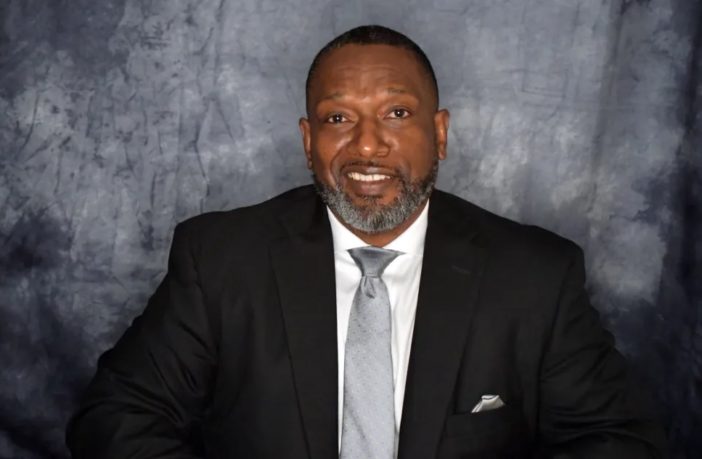By Anissa Durham
Word In Black
If you’re feeling suicidal or concerned that someone you know may be in danger of hurting themselves, call or text the National Suicide Prevention Lifeline at 988. The lifeline is available 24 hours a day, seven days a week and is staffed by trained counselors
“Within the Black community, we’ve had a narrative that we don’t die by suicide, that we’re resilient people who survived slavery. And that suicide was really a white problem.”
That’s what Vic Armstrong, vice president for health equity at the American Foundation for Suicide Prevention, says. With more than 35 years of experience working towards equitable access to mental health care, Armstrong knows the importance of starting those tough conversations.
Sign up for our Daily eBlast to get coverage on Black communities from the media company who has been doing it right for over 130 years.
According to the Substance Abuse and Mental Health Services Administration, suicide was the third leading cause of death in 2020 for Black Americans ages 15 to 24. The suicide rates for Black youth increased nearly 37 percent between 2018 and 2021.
On Feb. 5, AFSP launched a new initiative to support mental health equity for Black communities. Listening, Empathy, Trust and Support or L.E.T.S Save Lives: An Introduction to Suicide Prevention for Black and African American Communities is a free presentation aimed at fostering dialogue around mental health and providing suicide prevention resources.
The presentation will be shared through the chapters the organization has in each state, its media partners, and HBCUs. It is also available virtually. Word In Black sat down with Armstrong, who shared more about this program and its importance for the mental health of Black people.
Word In Black: Tell me about the L.E.T.S Save Lives program. Why did AFSP decide to create this initiative? What’s the goal?
Vic Armstrong: It’s part of an ongoing initiative by AFSP on how we can reach historically marginalized communities. Our goal was to create a resource by Black people for Black people — that could address the issues around suicide.
We wanted something that would help educate the community about the prevalence of suicide in the Black community. And something that would create avenues to open conversation. We engaged a marketing team, The House of Joy, a Black female-led organization to create Black imagery. Everything speaks to the Black experience.
Ultimately, the goal is always to reduce suicide rates. Specifically, we want to think about how we can get upstream in suicide prevention. Suicide itself is not a disease, it is the worst possible outcome of a combination of a lot of complex things that often include mental health challenges.
That means we need to create culturally relevant resources. And raise awareness that suicide is relevant to the Black community and is happening in our community. So that we don’t ignore people around us that are hurting.
WIB: Why was it important to create this program by Black people and for Black people?
VA: Historically, when we look at suicide prevention, it’s not a conversation that we typically have. In the last few years, we’ve been more open to trying to have that conversation. But, when you look around, there were very few resources for Black people, that speak to the Black experience.
For AFSP, when the mission is to save lives and bring hope — that’s for everybody. But traditionally, we’ve created resources that were not specific to any community, like painting with broad strokes.
Suicide doesn’t discriminate. Suicide is not exclusive to any one race or ethnicity. Neither is hope.
WIB: You’ve been working in the mental health space for more than three decades. What has kept you going in a space that can be dark and heavy?
VA: I grew up in rural North Carolina— my world was really small. I didn’t know a lot about what happened outside of my community. Once I got into the field of social work, my perspective broadened over time.
I started my career as a therapist. At one point, I was the only clinician in three counties. I saw adults. I saw kids. I saw men reported for domestic violence. I saw the women that they abused. I really saw some of the generational challenges — and that made me really fall in love with community mental health.
I think the suicide piece that really hit home for me was when I was the vice president of behavioral health for a large hospital system. In looking at all these resources as a hospital system, your primary goal is to avoid preventable deaths — we weren’t focusing enough on efforts around suicide prevention, especially in historically marginalized communities.
Now, I really focus on health equity in the suicide prevention and awareness space.
WIB: Thinking about the narrative that as Black people we don’t die by suicide or have depression. How does that then change the way we experience suicidality?
VA: Black people are more likely to go to a faith leader than a psychiatrist or psychologist. One of the things that happens is we look inwardly, into our community. The other thing that makes it difficult is when we tell ourselves a narrative that we should not be experiencing depression or anxiety.
We tell ourselves we don’t have the right to have those feelings, and that we should be able to manage it on our own. What ends up happening is that we don’t seek help.
So, part of what we want to do is be able to change that conversation. We are changing the message to our community. Letting them know that it’s OK to not be OK, it’s OK to feel vulnerable, and it’s OK to ask for help.
There are nuances in the way that communities internalize things that have happened to them. In the Black community, where we’ve seen racial discrimination and segregation — we have internalized that as just being part of the Black experience. What we’ve also done is not allow ourselves to talk about those things and how they impact us.
Some of these things are unique to the Black experience. We now want to create avenues for people to talk about it — and come into a space to acknowledge those challenges and talk about resources to provide healing.
This article was originally published by Word in Black.
Get your AFRO A CARD today!
Help us Continue to tell OUR Story and join the AFRO family as a member. Members will receive exclusive journalism, and directly support the future of the AFRO. You can choose from three membership plans below.



